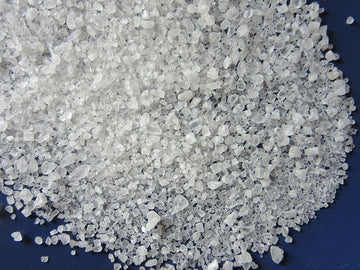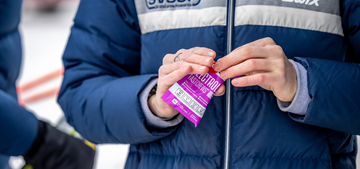
What is the ketogenic diet?
Put simply, the ketogenic diet involves extreme restriction of carbohydrates and protein, so that the majority of calories consumed come from fats. Adherents are fond of coconut oil, fatty cuts of meat, avocadoes, nuts, and other fat-heavy plant sources such as olive oil. The end goal is to force the body to fuel itself with fat instead of glucose as a way to promote an efficient fat-burning metabolism. Normally, the body prefers to run on glucose broken down from carbohydrates, sugars and starches, as it is more easily processed by the cells. However, when glucose is not available, the body will resort to other sources of energy. In some instances, fat cells are broken down to retrieve glucose from triglycerides, and the process results in a by-product called ketones. As ketone levels rise in the blood, someone is said to go into “ketosis,” which is just a term used to signify that the majority of a person’s energy is being sourced from fats and not carbohydrate. While in the short term, the diet has been shown to aid in rapid weight loss, science is somewhat mixed in the health benefits of long-term ketosis. Proponents of the diet claim it has benefits of mental clarity, increased focus and steady energy levels, compared to a carb-heavy form of eating. Others argue that due to the extreme limitations of food choice, it can result in nutrient deficiencies and low fiber intake. We are not advocating one side or the other. In terms of endurance benefits and physical output, the studies are also somewhat mixed. There are at least four separate month-long studies (detailed here) of athletes who consume high-carb vs. high-fat diets. These studies essentially found no difference between the types of diets, except at high-intensity output, which decreased slightly in athletes on the low-carb diet. Your nutritional plan for racing and training is unique to you, and should be for you to decide. Thus, this blog post does not discuss whether or not a ketogenic diet is right for any specific person. Instead, we would like to show that if you do decide to pursue this diet as a way of eating, you will need to supplement your food with extra sodium. Here’s why:What happens to hormones when you become ketogenic?
When you consume carbohydrate, the body quickly breaks it down into glucose, which the digestive tract moves into the bloodstream. Then the hormone insulin, which is produced in the pancreas, helps move glucose into cells so it can be used to produce energy. To stimulate the pancreas’ production of insulin, glucose has to first appear in the bloodstream. Conversely, after insulin helps remove extra blood sugar from the body, blood glucose levels are no longer high, and the hormone is no longer needed. For individuals who are heavily reliant on carbohydrate (especially simple carbohydrate such as white sugar or processed grains), insulin is nearly always present in the bloodstream, due to the constant flow of glucose in the diet. This can lead to what is known as “insulin resistance,” where the body becomes so used to insulin, that the hormone is no longer as effective at removing blood sugar from the bloodstream. This condition, if left untreated, can result in type 2 diabetes. However, adherents to the ketogenic diet are on the other end of the spectrum. By limiting carbohydrates to 25 to 50 grams per day, these individuals rarely consume significant amounts of glucose, and thus rarely trigger the body’s production of insulin. In terms of energy levels, this is not that much of an ordeal, because the body resorts to other sources of energy to fuel itself. However, removing excess blood sugar is not the only thing that insulin does. It also has important effects on blood sodium levels.How does low insulin affect blood sodium levels?
In addition to regulating blood sugar, insulin helps the body retain sodium. The exact mechanism is not quite known, but it is generally understood that insulin helps with the reabsorption of sodium into the body. Without insulin, sodium passes right through the bloodstream, and the kidneys filter it into urine. People who experiment with ketosis, as noted above, have low insulin levels, and thus, their bodies expel sodium at a much higher level than normal. This is supplemented with the results from two studies:- A 2012 study published in the American Journal of Physiology, concluded that a “lack of insulin ... is the cause of sustained renal salt and water loss in uncontrolled
diabetes.” People who suffer from Type 1 diabetes to not have insulin-producing cells in their bodies, so when uncontrolled, this type of diabetes results in very low insulin levels, and thus, high levels of salt loss through urination. - Additionally, a separate study published in the Journal of Clinical Investigation found that when given insulin, subjects’ sodium concentration in their urine was reduced.
Thinking of going ketogenic? You’ll need extra salt.
As you can see from the research above, low carbohydrate diets can result in low blood sodium levels, even when sodium consumption is considered normal. Due to a corresponding drop in insulin levels, reducing carbohydrates to the levels prescribed by the ketogenic diet can result in fatigue or lightheadedness due to the high loss of sodium.
To counteract this, you will need to incorporate extra sodium into your diet. Many ketogenic diet experts argue that adherents should seek to consume two to four grams (2000-4000 mg) of sodium per day. Consider that the recommended daily amount (RDA) of sodium is 2300 mg for normal diets.
This can be accomplished by adding extra salt to food, either by salting manually or incorporating products such as salted butter or bullion. Many keto-fans add Himalayan salt to their meals. Additionally, bacon – usually a staple of ketogenic breakfasts – contains high levels of sodium.
In addition to, or as an alternative to the above food sources of sodium, consider adding two to three SaltStick Caps to your daily nutrition routine. Each capsule delivers 215 mg of sodium, along with other key electrolytes, that can assist with your overall nutrition goals, and keep you feeling great. Also, if you are going low carb and you plan on working out in the heat, you will need to be extra conscious of replacing lost sodium. Our Usage Guides, which can be found here, explain how to incorporate SaltStick products into your specific training and racing routine. Happy training! Disclaimer: Contact your physician before starting any exercise program or if you are taking any medication. Individuals with high blood pressure should also consult their physician prior to taking an electrolyte supplement. Overdose of electrolytes is possible, with symptoms such as vomiting and feeling ill, and care should be taken not to overdose on any electrolyte supplement.







